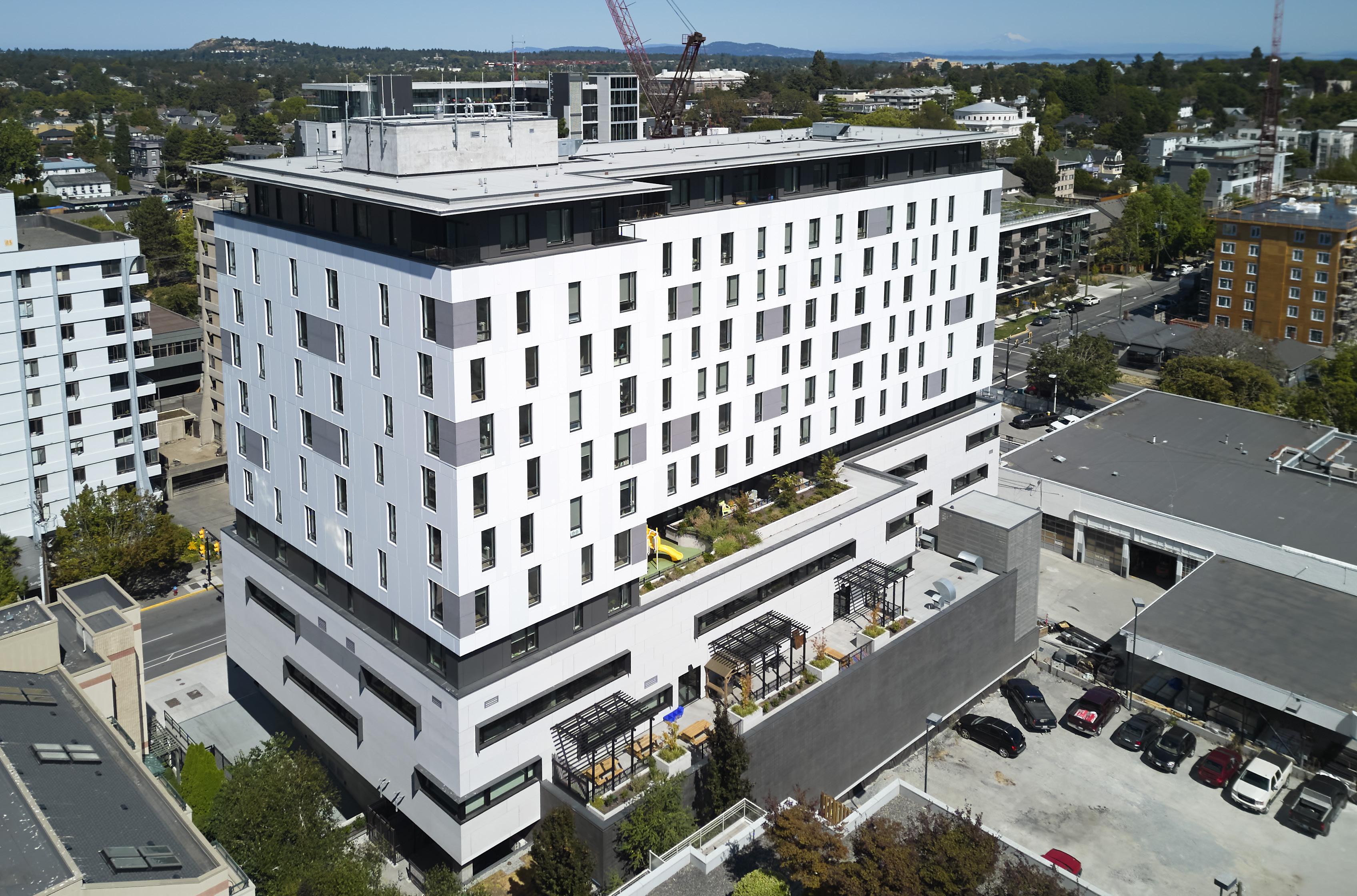Direct burial conduit for industrial projects
Data centre resilience and sustainability
Cost-efficient earthquake resistance

Direct burial conduit for industrial projects
Data centre resilience and sustainability
Cost-efficient earthquake resistance





4
4
EDITOR
Peter Saunders (416) 510-5119 psaunders@ccemag.com
SENIOR PUBLISHER
Maureen Levy (416) 510-5111 mlevy@ccemag.com
ACCOUNT CO-ORDINATOR
Cheryl Fisher (416) 510-5194 cfisher@annexbusinessmedia.com
GROUP PUBLISHER
Paul Grossinger (416) 510-5240 pgrossinger@annexbusinessmedia.com
CEO Scott Jamieson sjamieson@annexbusinessmedia.com
ISSN: 0712-4996 (print), ISSN: 1923-3337 (digital)
POSTAL INFORMATION: Publications Mail Agreement No. 40065710. Return undeliverable Canadian addresses to Circulation Dept., Canadian Consulting Engineer, 111 Gordon Baker Road, Suite 400, Toronto, ON M2H 3R1.
SPONSORED FEATURE Insights on Direct Burial Conduit for Industrial Projects
Direct burial conduit offers environmental protection from natural elements and enhances esthetics by concealing power lines.
6
Data Centres: Continuity for Computations
The growing demand for data centres in the face of the environmental challenges of climate change underscores the urgency to take proactive measures to ensure resilience and sustainability.
June 2024 Market Trends Handbook ccemag.com

6

8
8
Conversation: Cost-efficient Earthquake Resistance
As seismic codes continue to evolve to ensure new buildings are more resilient in earthquake zones, engineers face the challenge of keeping costs reasonable, during a housing crisis.
The choice of electrical conduit in industrial construction varies significantly based on installation type: above ground, below ground, direct buried or encased. The selection also hinges on the specifics of a project and its environmental context.
Fire resistance is a critical difference between above ground and below ground conduits. Above ground options comply with UL2515 and CSA C22.2 No. 2515 standards, designed to self-extinguish quickly after exposure to flames. Conversely, below ground conduits adhere to UL94 HB standards, suitable for less stringent fire safety requirements. Conduit manufactured and labelled for above ground applications can also be used for below ground applications.
Direct buried conduit is used in below ground installations of electrical systems in commercial and industrial construction projects. Typically, direct burial conduit is used in applications where there will be minimal digging after installation, as digging has the potential to disrupt and damage the conduit (and the cable) buried beneath. Direct burial conduit offers environmental protection from natural elements and enhances esthetics by concealing power lines. Frequently used in data centres and utility infrastructures, it facilitates easier roadway crossings and minimizes traffic disruption. Direct burial conduits need to be robust enough to withstand soil pressure.
Several factors influence the decision to use direct burial conduit:
1. Volatility of the environment. Soil type,

settlement and load impact the mechanical strength of the conduit. Corrosion can impact the conduit as well.
2. Compacting of soil. For very deep trenches, special soil conditions or where a high rate of compacting can be expected, a heavier wall conduit should be selected.
3. Ease of future access for maintenance. Using conduit will allow contractors to more easily locate and repair cables down the road with less risk of damage to the conduit. Consider a conduit’s coefficient of friction to evaluate for ease of pulling as well as cable fault resistance, which allows a cable to be easily pulled through for repair and replacement.
4. Project complexity. Thoughtful planning with strategic solutions on the front end of a project provides benefits and efficiencies when it comes time to pull cable.
5. Compliance with local regulations and depth requirements. While the National Electrical Code (NEC) may approve a conduit (also referred to as “duct” or
“pipe”) use for direct burial, local regulations may call for more stringent installation techniques, such as dictating how deep the conduit must be buried.
6. Potential interference from future landscaping that could endanger the conduit.
For projects requiring direct burial conduit, selecting the best underground conduit for a project is key. It is also important to consider the costs associated with each type of conduit’s raw materials, as well as installation, the long-term financial impacts of a conduit’s durability and availability for your substrate of choice.
Commonly used conduits for underground applications include traditional metal conduits such as rigid metal conduit (RMC) or electrical metallic tubing (EMT), fibreglass reinforced thermosetting resin conduit (RTRC) and polyvinyl chloride (PVC) conduit.
For tailored advice on conduit selection and installation, contact Champion Fiberglass


No burn-through eliminates elbow repairs
Lower material and installation costs

Fault resistance makes repairing cables easy
Durable and corrosion-resistant for project longevity


In 2023, operators of large data centres in London, England, struggled to keep their servers cool as temperatures rose. Ultimately, several of these facilities had to be shut down after their redundant cooling systems failed.
P ut simply, temperatures had exceeded their design parameters. While this particular news attracted much attention, London’s data centres are hardly alone in contending with unexpected environmental and energy-related volatility in recent years. Their struggle in maintaining operations is a stark reminder that has also resonated in Canada, where the same threats constrain uptime, profitability and the engineering of new facility locations.
T he growing demand for data centres in the face of the environmental challenges of climate change underscores the urgency to take proactive measures to ensure resilience and sustainability. And as changes in the energy system precipitate further volatility in 2024, it is certainly time for improvements in efficiency, the diversification of procurement and the engineering of on-site energy systems.
The following are three key challenges:
1. Energy cost volatility
Climate change, geopolitical tensions and supply chain stress combined to causes record levels of energy price volatility in 2022 and continued risk in 2023. Canada, where the energy sector constituted 11.8% of gross domestic product (GDP) in 2022, is not immune.
Ranking sixth globally in total primary energy production, Canada faces such challenges as aging infrastructure, stringent environmental regulations and market access issues. These factors contribute to the complexity of managing energy costs and sustainability. The resulting volatility can make it difficult for data centre operators to attract capital, plan investments and anticipate profitability.
2. Grid constraints
Grid power and transmission capacity represent a growing constraint on the construction and placement of data centres, further

contributing to energy price uncertainty for their operators. For a sense of perspective, data centres consume about 1% of Canada’s energy every year. About 50% of this energy powers the servers, while another 40% goes into cooling them.
Throughout 2024, the proliferation of artificial intelligence (AI) technologies, with their high demands for computational power, will exert additional pressure on already strained electrical grids, amplifying the uncertainties facing data centre operations.
3. Increasingly frequent and severe outages
Climate change is challenging grid reliability in multiple ways, including droughts, wildfires and severe storms.
In April 2023, an ice storm caused the largest power outage in Quebec since 1998, affecting hundreds of thousands of people. In the U.S., meanwhile, power outages caused by severe weather are growing in frequency and duration. Long-term outages, like those precipitated by wildfires in California and freezes in Texas, can chal-
lenge a data centre’s store of diesel fuel for backup generators and, for that matter, intensify competition for supply and impede delivery. Extreme weather can also impact data centres’ energy infrastructure directly, threatening on-site transformers and distribution equipment.
Incidents of sabotage are also on the rise.
The following are three ways for data centre operators to address the challenges of energy volatility:
1. Energy efficiency upgrades
The first step is to maximize a data centre’s energy efficiency. This metric, expressed as ‘power usage effectiveness’ (PUE), is a ratio between the total energy consumed by the facility and the actual energy delivered to the servers and related equipment. Thus, operators aim for the lowest PUE possible, at 1.0.
Over the past five years, the industry-wide average PUE has remained relatively flat. New innovations will be necessary for further gains.
Some such developments coming to operators include new cooling systems, increasingly efficient uninterruptible power supplies (UPSs) and advanced power, building and information technology (IT) monitoring and control systems. Running a UPS in high-efficiency mode, for example, can save hundreds of thousands of dollars for a typical data centre, over the life of the UPS. Data centre infrastructure management (DCIM) software can monitor both IT equipment and the underlying infrastructure, to help improve operational efficiency, while digital twin platforms can expedite the digitization process throughout the complete life cycle of power systems.
A diverse energy portfolio can help data centre operators manage volatility. Renewable energy sources are shielded from fuel cost fluctuations, reduce the facility’s car-
bon footprint, help combat climate change and mitigate future volatility.
Strategic investment in off-site renewables can help add clean capacity to the power grid, which can not only help to alleviate constraints, but also demonstrate to the public that the data centre is acting in the community’s interests.
Increasingly, data centre operators are looking to replace backup diesel generation with on-site energy resources (both generation and storage) to facilitate grid interaction and as a cleaner solution for primary power.
For one thing, a microgrid built around larger-capacity assets—such as a natural gas-based generator or fuel cell—could allow a facility to withstand longer grid power outages than would be feasible with on-site diesel fuel storage. For another, it can be controlled to optimize cost performance through automated grid interaction. Reducing the load on the grid can help to relieve congestion and associated public opposition.
Energy market volatility is likely to continue as systems undergo fundamental restructuring and the impacts of climate change grow. Data centre operators need to protect their operations from cost fluctuations and outages. At the same time, they must convince their host communities they are part of the solution, not competitors for scarce resources.
Of course, no one can realize this potential alone. Operators, engineers and technology providers must come together as partners to develop and adopt new solutions and propel the evolution of a more sustainable, resilient and predictably profitable data centre industry.
James See is national sales director for Schneider Electric Canada’s systems business, interacting with data centre and IT infrastructure clients. For more information, visit www.se.com/ca.
Leon Plett has been the managing principal of RJC Engineers’ structural engineering team in Victoria since 2015. Their provincial level of designation differs from elsewhere in the country, due to the complex engineering required to address the region’s risk of earthquakes. And as seismic codes continue to evolve to ensure new buildings are more resilient, engineers face the challenge of keeping costs reasonable, during a housing crisis.
Why are seismic codes changing?
As we gain more information about the geological record in this region, we find out there have been more frequent earthquakes over the course of history than previously thought, which increases their probability today. Newly discovered faults further increase risk. Modern building designs are based on these updated seismic hazards.
In addition to the Cascadia fault that runs all the way down the west coast, the more recently discovered Devil’s Mountain Leech River fault extends from southwestern Vancouver Island into the Strait of Georgia over to northwest Washington State. It runs right through the most populated areas of southern Vancouver Island, including Victoria.
Those hazards feed into the response spectrum, which measures the risk of ground shaking to buildings.
How does that affect your work?
It changes the magnitude of what we need to do for new buildings. We resist seismic forces primarily through the use of shear walls or bracing. These structural elements must become larger and more numerous to resist more force, which in turn requires a larger foundation, all of which increases the building’s structural cost.
In a residential tower with a concrete core for stairs and elevators, that core’s walls must now be 30% to 70% thicker, depending on site class (i.e. based on soil and other geological conditions). A 1-m thick wall in the old code could become a 1.5-m thick wall in the new code, which adds to the cost and reduces occupiable floor area. Such incremental costs have a significant impact during a housing crisis.
So, how can you make safety affordable?
As structural engineers, it is very important to try to guide the design process early on, to develop building forms that are naturally resilient and safer. Simplifying the built form can offset costs.
Also, a lighter building is safer in a quake. The forces on a building come from its own inertia—i.e. a heavy building wants to stay where it already is—versus ground movement. When we make a building lighter, we reduce the seismic forces on it, so it requires less bracing, saving costs.
In midrise woodframe, for example, rather than use a concrete topping for acoustics—which can

account for half the weight of the structure—we try to address acoustics through sprung ceilings and resilient floormats.
“Simplifying the built form can offset costs."
A mass-timber tower is 30% lighter than a concrete tower, reducing the shear walls and foundation, which offsets the additional cost of the building material. We also have more sophisticated design software and technology today and contractors can use higher-strength concrete and steel to limit the costs of seismic safety measures.
In most cases, we design for anticipated loads in scenarios where people will escape with their lives, but there will be enough damage that the building will be not occupiable post-quake. We did recently work on a unique project, however, the new Victoria Fire Station No. 1, which due to its purpose was designed in accordance with the post-disaster occupancy requirements of the 2018 B.C. Building Code and the 2015 National Building Code of Canada (NBCC).
There are eight storeys of affordable social housing above the four-storey fire hall and two levels of underground parking. Those are the safest residential units in the city!